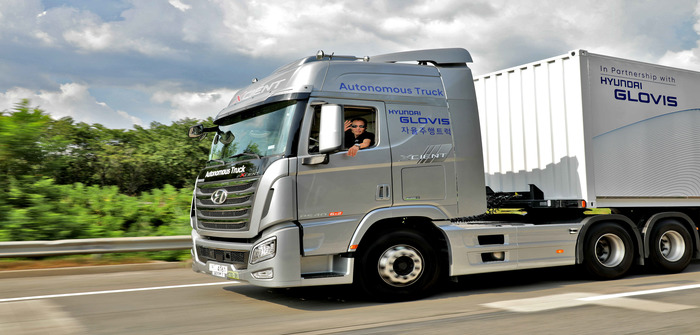A Hyundai Xcient truck with Level 3 autonomous technology successfully completed a 40km (25 mile) route on the highway between Uiwang and Incheon while carrying a large semi-trailer. This demonstration was part of Hyundai’s plan to bring convoy capability to market in the next decade and to develop fully autonomous trucks.
The vehicle used was an Xcient model with a load capacity of 40 tons that was equipped with systems that allow it to autonomously make lane changes, detect lane changes made by other vehicles, navigate through tunnels, and deal with stop-and-go traffic.
These functions were made possible by a range of different sensors: three front and side-rear cameras; two front and rear radars; three lidar units in the front and sides; and a hitch angle sensor in the trailer coupler, which computes the change in angle between the truck and trailer in real-time, allowing it to be safely stabilized during sharp turns. The sensor data was combined with HD map data.
Hyundai Mobis, Hyundai’s parts department, developed a new steering control system for this project. MAHS, or Motor Assist Hydraulic Steering, controls the steering angle, minimizing driver fatigue and allowing autonomous steering.
For the demonstration to take place, the Korean Ministry of Land, Infrastructure and Transport issued a temporary autonomous driving license the first time it did so for a truck. Further tests are planned in a variety of areas such as Busan.
By Illya Verpraet


